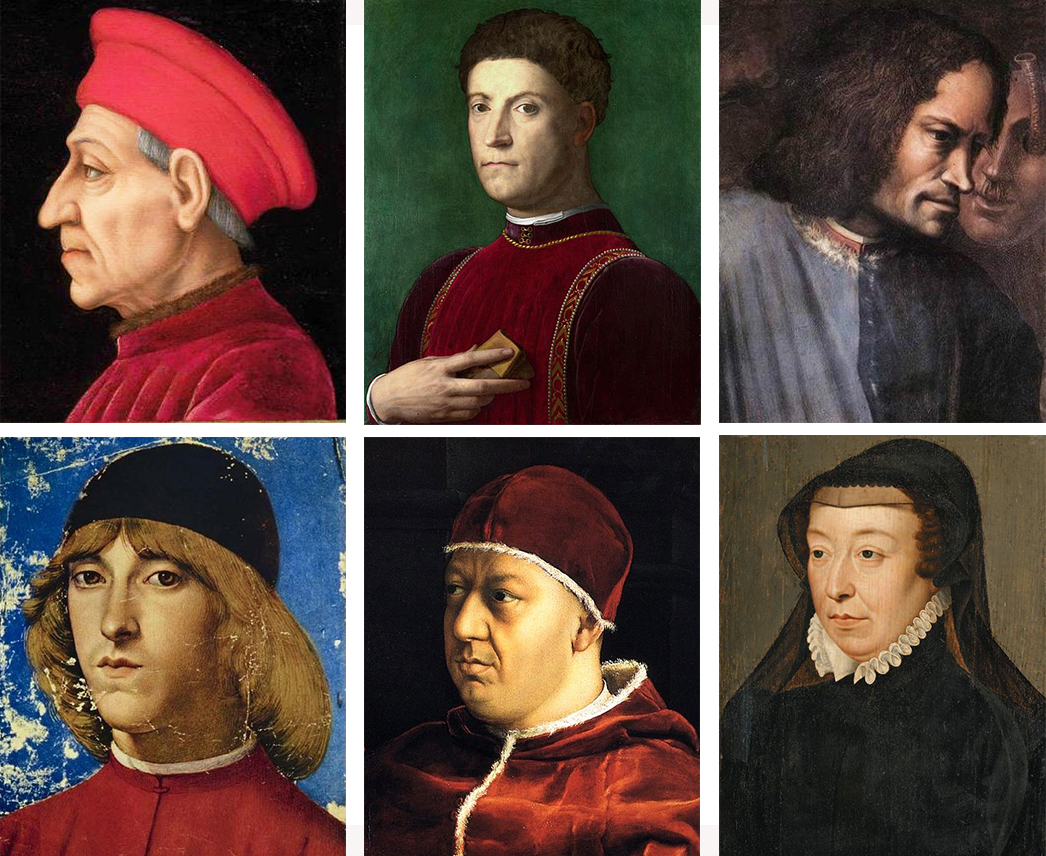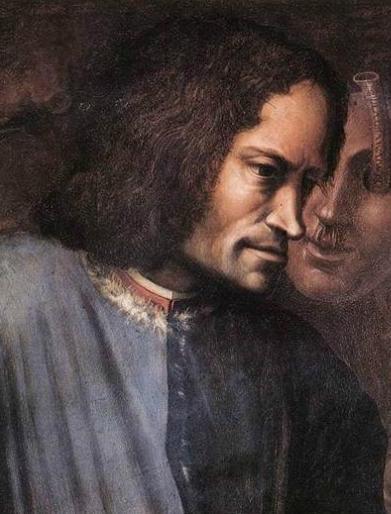By Tim Gihring //
It’s good to be the king. It’s good to be the queen, for that matter. But in Florence, Italy, in the 1400s and early 1500s, it was great to be the Medicis. Not royalty, but rulers nonetheless—a rich, powerful family who oversaw the rise of Florence as the intellectual and artistic capital of the Italian Renaissance.
They are the players behind the scenes, essentially, in the drama that is “Botticelli and Renaissance Florence: Masterworks from the Uffizi,” now on view at Mia. Without them—their libraries, their art collection, their philosophies, their money—the show doesn’t go on. Indeed, it often seemed like the show was over for the Medicis, but nothing kept them down for long. Not murder, conspiracy, prison, war, or financial collapse. Until, in 1737, they ran out of the one thing a dynasty can’t do without: more Medicis.
Here are the major Medici players of the Renaissance:

Posthumous portrait of Cosimo de’ Medici, circa 1565-1569, the workshop of Bronzino, Uffizi Galleries
Cosimo
The original “dark money” man. In the early 1400s, he strategically deployed the banking fortune he inherited to essentially buy politicians, popes, positions, and even marriages, becoming the de-facto ruler of Florence despite never holding office himself. (And despite Florence ostensibly being a democracy and proud of it.)
“Political questions are settled in [Cosimo’s] house,” the pope at the time noted. “He is who decides peace and war. … He is king in all but name.” Indeed, Cosimo gave a different aspiring pope the money to buy himself the office of cardinal, a short leap from the papacy, and was repaid with the contract for all the papal banking needs (which were many).
But it was, perhaps, his patronage of the arts that had the most lasting impact. He supported artists like Fra Angelico, Fra Filippo Lippi, and Donatello. He built the first public library in Florence and scoured the continent for worthy manuscripts to fill it—mostly humanist texts that helped launch the Renaissance-era interest in the classical world. He also finished the famous dome atop the Duomo through his support of an architect in whom no one else had much confidence.
Lorenzo
Cosimo’s grandson picked up the mantle of artistic patronage and ran with it even further. He created a sculpture garden and filled it with ancient statuary, which artists and poets came to study. Eventually he added living quarters, and it became a kind of school of the arts. Botticelli was a regular, as was Leonardo da Vinci, and, much later, an ambitious teenager—Michelangelo—who essentially moved in.
Botticelli was enmeshed in the family through his mentor, a Medici-sponsored artist, and became a close companion of Lorenzo. In his work, he dutifully affirmed their importance, like painting three generations of Medicis—starting with Cosimo and ending with Lorenzo and his brother Giuliano—into The Adoration of the Magi, standing in for the wise men. (Botticelli painted himself as a bystander.)
Like his grandfather, who was briefly exiled and threatened with execution, Lorenzo had his rivals, including another banking family who conspired to replace the Medicis as the papal financiers. The pope not only went along with the plan, he helped plot the assassination of Lorenzo and Giuliano, with the idea that the archbishop could take over as the leader of Florence.
On April 26, 1478, during Easter Mass in the cathedral, Giuliano was killed by priests right in front of the altar, while Lorenzo escaped. The archbishop, who attacked a Medici official, was hanged in a cathedral window, and the city stood by their ruler. He was thereafter known as Lorenzo the Magnificent.

Portrait miniature of Piero di Lorenzo de’ Medici, 1488, Gherardo di Giovanni del Fora, Biblioteca Nazionale, Naples
Piero
The eldest son of Lorenzo, Piero had his work cut out for him. The fragile regional peace cobbled together by his father, largely through the force of his personality, crumbled soon after Lorenzo’s death in 1492. Piero, age 20, was soon faced with the overbearing king of France fighting his way south through Italy to claim the Kingdom of Naples. After attempting a feeble resistance, Piero went to meet the king, intending to push back—as his father would have—and instead he caved completely.
The once-adoring public turned on the Medicis, looted their palazzo, and forced Piero and his family to flee to Venice. There, they survived by selling Lorenzo’s antique jewels, while making sporadic attempts to reclaim Florence.
In the end, Piero drowned in a battle between Spain and France as they fought over Naples. He came to be called, in contrast to his father, Piero the Unfortunate.
Giovanni (aka Pope Leo X)
The younger brother of Piero, Giovanni was perhaps given the easier row to hoe. When he was 13, his father prevailed upon the pope (a distant relative) to make the boy a cardinal. This gave Giovanni a certain assured station in life, and when the family was evicted from Florence after Piero’s disastrous attempts at diplomacy, he didn’t sweat it. While his brother languished in Venice, he ventured north through Germany, France, and the Netherlands before returning to Rome and a warm welcome from a new pope.
After Piero’s death, he became head of the family and was able to reassert its rule over Florence. But he had other, larger prizes in mind, and left his younger brother Giuliano in charge while he made a run at the papacy himself.
He succeeded in 1513, to the ultimate regret of the Church. Ever the swaggering sybarite, he reportedly declared, “Since God has given us the papacy, let us enjoy it,” and indulged in extreme nepotism, luxurious living, and dubious practices—draining the treasury to fund military misadventures and selling indulgences to renovate St. Peter’s Basilica. When Martin Luther and his fellow Protestants pushed back, he refused to acknowledge their concerns as a threat that would soon tear apart Europe—and the Church.
Other famous Medicis:
Piero the Gouty was Cosimo’s son, but had a short and unremarkable rule before his poor health—thus the nickname—took him out. His sons Lorenzo and Giuliano, meanwhile, more effectively picked up where Cosimo left off.
Catherine, born in 1519, became queen of France when she married King Henry II.



